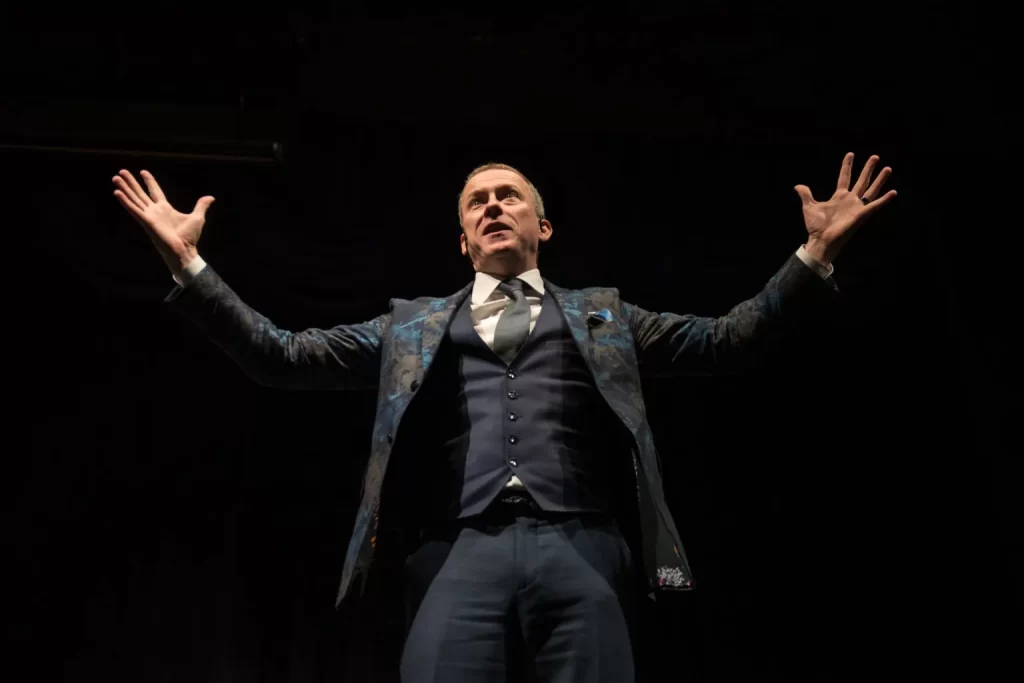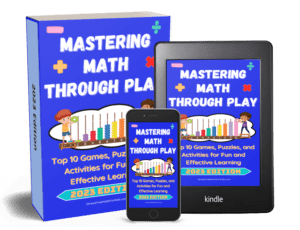When I got to see Ron Clark teach math, it was like meeting a celebrity for me. I don’t remember how I first heard of Ron Clark, but I read his first book The Essential 55 when it came out in 2003. I have read all of his books since, and he is one of my inspirations for who I want to be as a teacher. Last week I finally had the chance to visit his Atlanta school, Ron Clark Academy, for the RCA EXP. This was a two day professional development opportunity filled with keynotes, workshops, classroom observations, and time to interact with students. The entire event was amazing. The school was like nothing I have ever seen and I could write many more posts about it!

However, by far the part that most blew me away was when I got to see Ron Clark himself teach a 5th grade math class. I have never seen anything like it and I am still thinking about it days later.
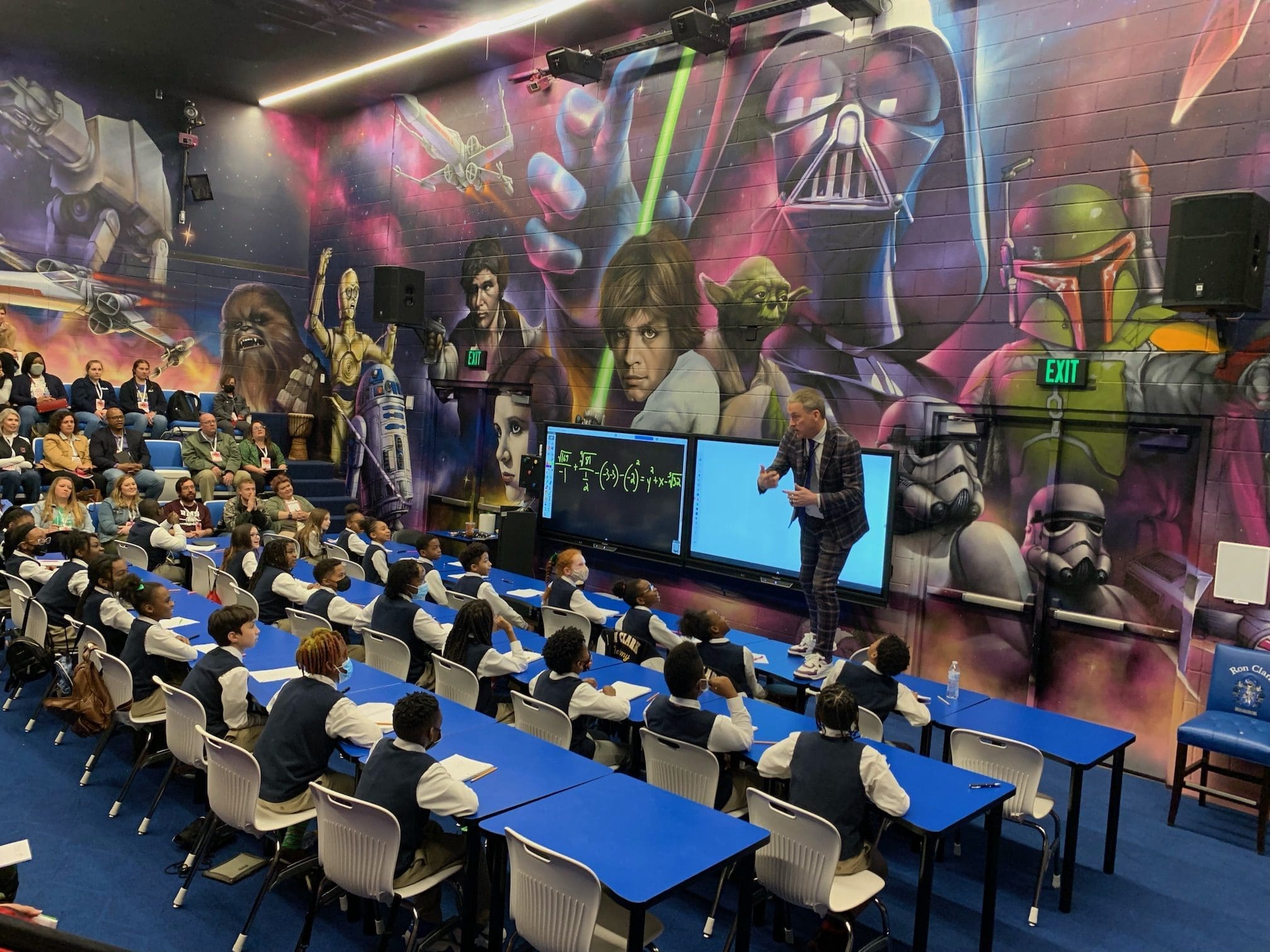
The 5th Grade Math Lesson Part One
When the visiting educators entered the room all 32 students, seated in straight rows at long tables, were working out a problem on their iPads with complete concentration. The room was painted with floor to ceiling beautifully detailed Star Wars murals. High energy music was playing, a timer was on one of the two smartboards at the front of the room, and Mr. Clark was walking on top of the tables checking the students’ work. He didn’t say anything, but was using gestures and signs. When a student had the work done correctly, he gestured to them and they joined him walking on the tables checking the work of their classmates. and using the same gestures their teacher was. (Walking on the tables is a big thing here!)
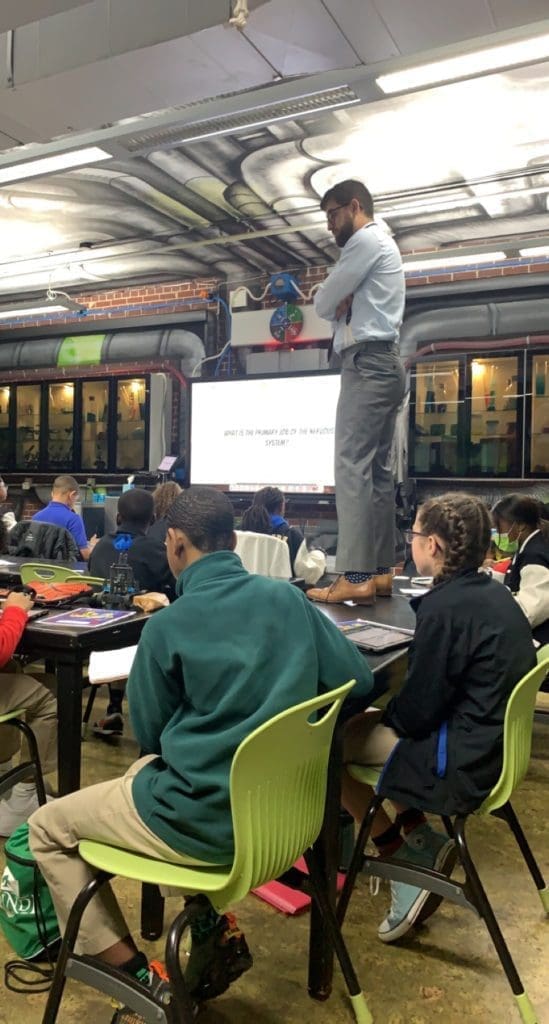
5th Grade Math Lesson Part 2
When the timer went off the students quickly returned to their seats. Mr. Clark went to the front of the room, and invited students to share their thinking. No hands were raised. Several students would start speaking, but when Mr. Clark made eye contact with the one he chose to listen to, the others would stop talking. The chosen student would stand, turn to face the class (swiveling his or her body to make eye contact with all classmates) and share their thinking. Sometimes they would explain a step in how they solved the problem. Sometimes they would explain where they made a mistake and what their struggle was in solving the problem.
The other students all listened attentively, bodies turned toward the speaker and making eye contact, and many were making hand gestures indicating that they agreed with the speaker, understood what they were saying, or disagreed, Some students went to the smart board to demonstrate how they did something. While they were up there, whenever they got to a computation they would gesture for the whole class to answer (and 16 times 5 is…) and the whole class would say the answer instantly in unison. (more on those memorized facts later)
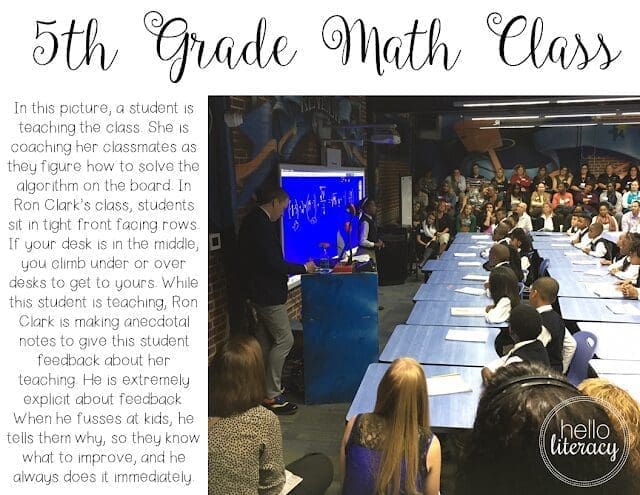
5th Grade Math Lesson Part 3
Next Mr. Clark put up a new problem for the students to solve mentally. It was a complicated problem, well above 5th grade standards. The students were finding the perimeter of a shape with missing side lengths. However, the side lengths given required them to solve cubic roots and to use the Pythagorean theorem to find the missing side lengths of the triangle. Not only that but they had to know they had to use the Pythagorean theorem- he did not tell them that! The students were no longer using their iPads but solved everything mentally as Mr. Clark recorded their answers on the smart board. Without hesitation they would call out in unison answers to questions like “what is the cubic root of 256?”
I wish I had taken better notes on the lesson itself to be able to show you the problems, but I was watching entranced. Another thing that was obviously a regular occurrence was sayings- when a student gave a particularly good observation Mr. Clark would say “Is (student’s name) on fire?” and all the students would shout “Wipe him down!”
5th Grade Math Lesson Part 4
From there, I was even more impressed. The students went into measurement conversions, but it was much more than simple conversions. Mr. Clark did not have a problem prechosen for this- he asked one student for a theme for a restaurant (Star Wars,) asked the students to come up with a jingle for the restaurant, then to come up with a specialty drink. They didn’t spend a long time on this but obviously enjoyed it. Everyone was involved and engaged, laughing and being creative.
Mr, Clark then led them in using hand gestures and sound effects to act out opening the refrigerator of the restaurant to see how much milk they had to make the drink. One student decided how many gallons there were. Another student decided how many quarts they needed for their drink recipe and how many people each recipe would serve. Another student chose how much the drinks would cost. The question posed to them was how much money they could make from the gallons in the fridge.
Students led the problem solving mentally as Mr. Clark wrote down what they said. The entire class was using hand gestures for bigger to smaller and smaller to bigger, not using conversion charts at all but having the conversions memorized, and shouting out in unison the answers to the computations including multiplying double digit numbers. It encompassed so many aspects of math, and every single student was fully engaged.
When the class finished solving the problem together, Mr. Clark gave the students an individual math puzzle to solve on their iPad. Mr. Clark said if 10 of them got it correct he would “push the green button.” Of course more than 10 did, and the green button led to lights and music for the students to have a quick dance party while standing on their desks!
Teaching Philosophy
After the students left, Mr. Clark spoke more about his teaching philosophy. Kids, he told us, are losing the ability to memorize. He combats this in the beginning of the year by giving students a “Math Bible,” a 6 page document of multiplication facts, square roots, cubic roots, quad roots, and rules for computation of positive and negative integers, and having them memorize it. His dedication to this is such that he gives students his cell number and during the first few weeks of school has them call him every 15 minutes in the evening to answer math questions until they can get 5 in a row correct without hesitating.
Mr. Clark doesn’t hang anchor charts because he wants the students to have the math in their brains. The brain is a muscle and must be exercised. He allows no calculators and very little paper and pencil; instead he teaches strategies and forces students to use mental math.
His goals are always:
- to increase student effort,
- increase participation,
- and decrease careless errors.
Students should always have a vision for themselves, know they can recover from mistakes, and feel at home in their class.
Q & A
Finally, Clark took questions from the visiting teachers. The first question he addressed was how he teaches the students to track the teacher and other students.
He explained that he begins the year with tracking practice and games. In one game he will actually have other teachers roam the room wearing a ghoul mask while he teaches- any student who looks at them is out of the game.
In the beginning of the year he will also have a ball to throw to the speaker- everyone looks at the person holding the ball. It is a priority for students to get used to looking each other and adults in the eye. The main thing with this or anything else you want students to do is to show them exactly and specifically what you want them to do and then practice, practice, practice.
Someone else asked about the painted murals in the classrooms (all the classrooms had a different theme, and all were amazing) Ron Clark answered, “Our school doesn’t have bulletin boards.I don’t need leaves on the wall to know it’s fall. We create beautiful classrooms and let teachers use their time and energy to create lessons.”
Joy of Learning
Above all else learning should be joyful. It was actually Clark’s cofounder Kim Bearden who spoke about this at a later session, but it was definitely exhibited by Mr. Clark and his students. Exude what you hope to create- if you want enthusiastic and joyful learners you have to be the same. Teachers must balance structure, discipline and respect with creativity, passion, and enthusiasm. Passion can take many different forms , but when you exude it people will be drawn to you. Ask yourself every day- if I peeked into my own classroom, would I be drawn to it?
Using Motion and Music to Memorize
The school in general uses a lot of music and motion to memorize concepts. As Mrs. Bearden told us, music is the heartbeat of life. They use music for entrances, exits, cheers, chants, and songs for academic content. She also pointed out that students need 70-90 minutes a day of physical activity for optimal brain development. In Finland, the country that has the highest math and science scores in the world, students go outside for recess for 15 minutes every hour on the hour. We usually can’t do that, but we can add in lots of opportunities to move. Military marches, gamifying questions and having students move across the room as they answer, having the correct answers to multiple choice questions spell out the notes of a familiar song students can play on a free online keyboard.
There are also drums in every classroom that the students play at different times. I got this picture in an 8th grade English class (also note the African American history murals in this classroom.)
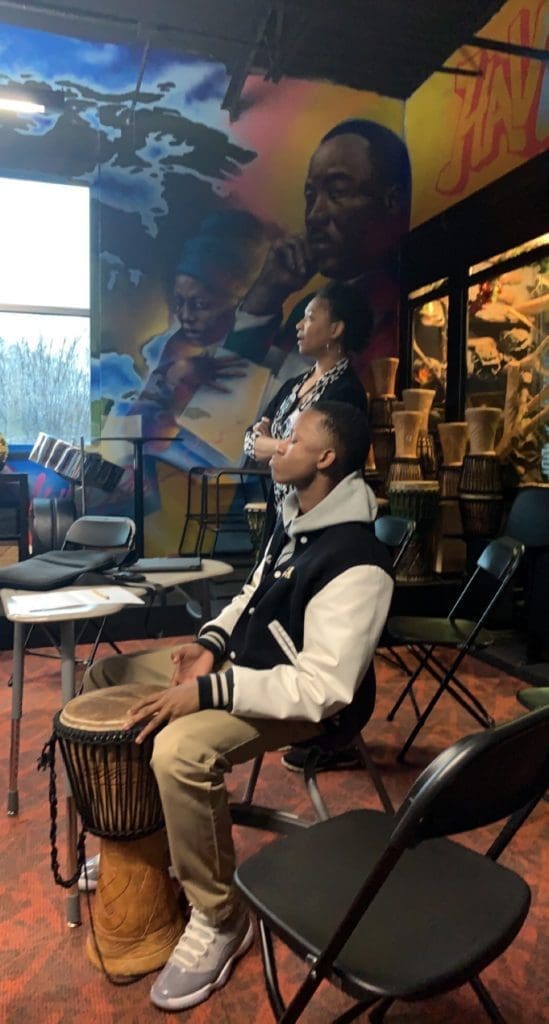
Here is a music video Clark’s 5th graders made in 2016
And a song written, filmed and edited completely by students
Other Math Teachers at RCA
Of course Ron Clark isn’t the only incredible math teacher at RCA. When I got to see Ron Clark teach math, I unfortunately didn’t get to see the others teach so I can’t tell you anything from personal experience. I do know they have some amazing resources available that I will be using myself!
Go here to read about Valerie Camille Jones-Ford and here to see a video she made about using Class Flow to teach.
Diane Kemp is on Instagram and Twitter as @kempkidzz and on Pinterest as dmkemp71.
Dr. Natalie Odom Pough is on Instagram and Twitter as @Dr_Pough
Opportunities to Learn More at RCA
If you have the opportunity to experience RCA Exp for yourself I highly recommend it. When I got to see Ron Clark teach math, it was truly inspirational. Experiencing the energy of the school in person is indescribable. You will learn about how they teach all content areas, how they develop student culture and community, and how they involve families. It is expensive, but well worth it, and the proceeds go to student scholarships (RCA is a non profit organization)
If you can’t get to Atlanta for the in person event, they also offer virtual PD and Club RCA which gives you weekly online live sessions, direct access for questions, and opportunities for collaboration.
Social Media to Follow
Follow Ron Clark on Instagram or Twitter
Follow Ron Clark Academy on Instagram or Twitter
Subscribe to Ron Clark Academy on YouTube
Books to Read
And of course there are books by Ron Clark that you can read:






